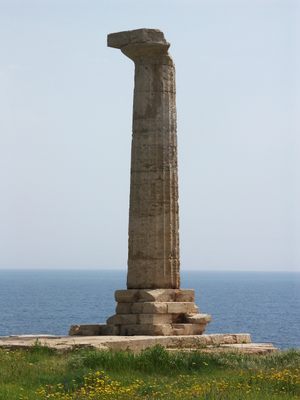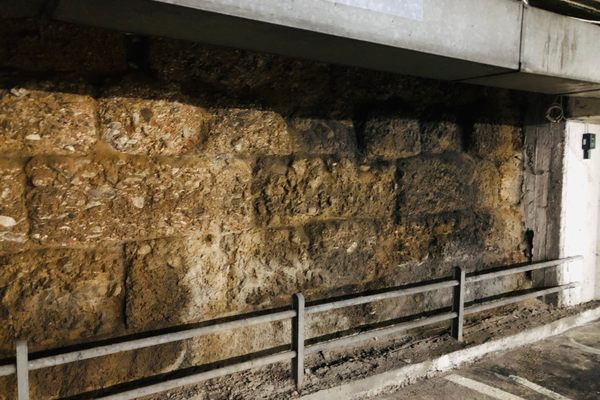About
The ancient Greek colony of Kroton, modern-day Crotone, was one of the most important cities in southern Italy. On a cape near Crotone, the Temple of Juno Lacinia was built between the 6th and 5th century BC. According to legend, the mythical hero Hercules founded the temple here, on a promontory high above the sea, where it was easily visible from ships sailing between the Greek colonies on the Ionian Sea.
The imposing temple quickly became one of the main religious structures of Magna Graecia (the Roman name for the ancient Greek colonies along the southern coast of Italy) and was described by contemporaries as the most beautiful temple in southern Italy. Originally dedicated to the Greek goddess Hera, after the Roman conquest the temple was dedicated to Roman equivalent, Juno. It was used until the 4th century, probably abandoned after the Edict of Thessalonika in 380 declared Christianity the state religion of the Roman Empire.
In the 16th century, the temple was still completely intact, but it was later destroyed and its stones used to build various structures in nearby Crotone, such as the episcopal palace, the castle, the port, and some noble palaces. Two columns remained, until in 1638 an earthquake destroyed one of the two. Today the only remaining feature of the Temple of Juno Lacinia is a lonely, 27-foot-tall Doric column.
The cape on which the temple was located was known as Lacinium in Roman times, and later, when the temple was still intact, as Capo Colonne, meaning "Cape of the Columns." Now, with just a single pillar remaining, it's known as simply Capo Colonna, or "Cape of the Column."
Related Tags
Know Before You Go
The ancient column located within the Museum and National Archaeological Park of Capo Colonna (Museo e Parco archeologico nazionale di Capo Colonna), a large archaeological excavation site about 6 miles (10 km) outside the city of Crotone. Finds from the excavations are on display at the museum at the site.
Flavors of Italy: Roman Carbonara, Florentine Steak & Venetian Cocktails
Savor local cuisine across Rome, Florence & Venice.
Book NowPublished
January 23, 2019

























